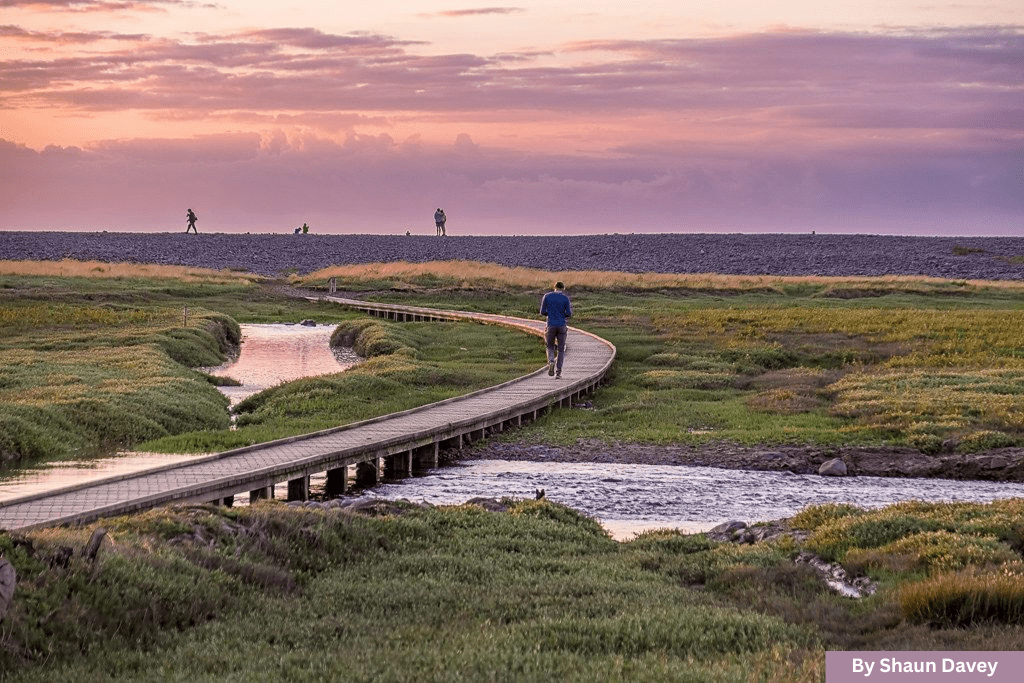Exmoor National Park – All Things Bright and Beautiful
Exmoor National Park lifts the spirit and inspires the mind. This tranquil landscape of coast, moor, ancient woodland and rivers has long drawn writers, poets, and artists—some born here, others who came seeking inspiration. Many well-known figures have made Exmoor their home, drawn by its peaceful rhythm, timeless values, and stunning natural beauty.
While staying in Dunster village, Cecil Frances Alexander, wife of the Primate of Ireland, began writing the beloved hymn “All Things Bright and Beautiful.” Her words—“the purple-headed mountain, the river running by”—are widely believed to describe Dunkery Beacon in late summer, when the moorland is ablaze with purple heather. The phrase “all creatures great and small” truly comes to life here—just as it did then.
A young Beatrix Potter once described Dunster as “truly picturesque.”

Arthur C. Clarke, born in Minehead, may well have found inspiration for his visionary ideas beneath Exmoor’s stargazing skies or among the surreal rock formations of the Valley of Rocks near Lynton.
In the heart of the moor lies Winsford, the birthplace of Ernest Bevin, a key political figure and co-founder of the National Health Service.
The harbour town of Watchet famously inspired Samuel Taylor Coleridge’s “The Rime of the Ancient Mariner.” That literary legacy continues along the Coleridge Way, a 51-mile walking route from Nether Stowey in the Quantock Hills to Lynmouth, tracing Coleridge’s steps through peaceful valleys, moorland trails and scenic combes. Coleridge’s close friend William Wordsworth, who often walked these same paths, may have drawn early inspiration for “I Wandered Lonely as a Cloud” from the solitude and gentle beauty of Exmoor’s walks. Poets Shelley and Keats also found serenity here.
For today’s travellers, Exmoor walking holidays offer the same sense of discovery. The Salt Path, the bestselling memoir by Raynor Winn, follows the South West Coast Path—passing along Exmoor’s rugged cliffs and quiet coves. The story, now a major film, has led many to retrace her journey and discover the restorative power of nature. Another epic walk, the Two Moors Way, begins in Lynmouth and stretches 117 miles across Exmoor and Dartmoor to the South Devon coast at Wembury. It’s a unique chance to cross two National Parks in one unforgettable route.

Exmoor National Park is also known for its incredible stargazing holidays, thanks to its status as a Dark Sky Reserve. Many cottages and B&Bs offer perfect night-sky viewing from hot tubs or gardens under the stars.
Notable painters moved by Exmoor’s timeless charm include Sir Alfred Munnings, Lionel Edwards, Cecil Aldin, Fred Hall, A.R. Quinton, Caruthers-Gould, and Donald Ayres, who all captured the colour and character of this beautiful region.
From Exmoor’s western edge, “Tarka the Otter” by Henry Williamson celebrates life along the North Devon rivers and woodland. The village of Clovelly, childhood home of Charles Kingsley, inspired his classic “The Water Babies.”
R.D. Blackmore’s “Lorna Doone” is set in the dramatic Doone Valley, a real Exmoor location where you can even find the famous water slide described in the book.
Exmoor doesn’t just inspire—it shapes real-life heroes. None more so than during the 1899 Lynmouth lifeboat launch. When storms made launching impossible, 100 townspeople and 20 horses hauled the Louisa lifeboat 13 miles—up Countisbury Hill, across high moorland, and down Porlock Hill—to launch from Porlock Weir and save lives at sea.
In 1952, the tragic Lynmouth Flood claimed 35 lives. Amid the devastation, acts of courage and community stood out—proof of the strength that runs through Exmoor’s quiet villages and wild places. (Read the full story – click here.)

Come and Walk Where Poets Once Walked
Let Exmoor’s literary heritage, wide skies, starlit nights, and ancient paths calm your mind—and perhaps even awaken your imagination. Whether you’re following the Coleridge Way, walking a stretch of the Salt Path, exploring the Valley of Rocks, or climbing Dunkery Beacon, inspiration is never far away.
Plan Your Stay
Stay where inspiration lives:
- Minehead accommodation – perfect for coast and moor access.
- Dulverton holiday accommodation – riverside charm and moorland trails.
- Dunster B&Bs – medieval history, castle views, and cobbled streets.
- Porlock and Porlock Weir B&Bs – sea views and coastal walks.
- Lynmouth and Lynton cottages – ideal for walkers and cliff railway explorers.
- Exford B&Bs – right in the heart of Exmoor’s walking country.
- Winsford stays – peaceful village life with moorland on your doorstep.
- Ilfracombe holiday accommodation – artistic coastal hub with North Devon flair.
From Woolacombe Beach to the Quantock Hills, and from Combe Martin to South Molton, Exmoor is the perfect place to relax and reconnect.